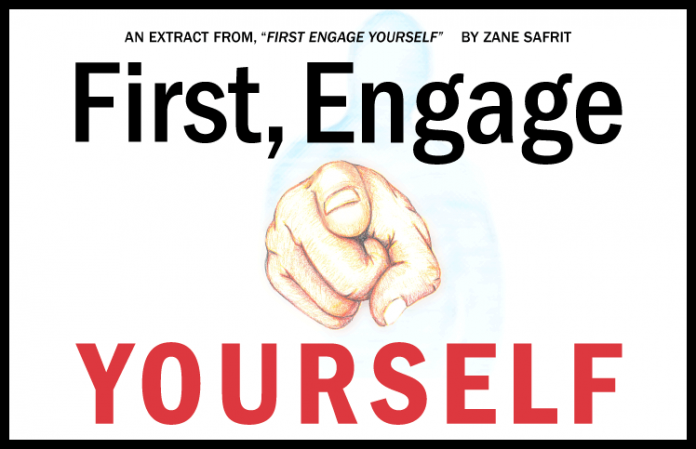
A few thousand years ago, Aristotle articulated a simple truth when he wrote: Well begun is half-done. The first step, the step most often overlooked in the millions of conversations on how to engage employees, is to understand why engagement is important to… you.
Here are three questions that should help provide your answers.
- What’s in it for me?
- Why should I care?
- Why should I believe?
From our first breath to our last dying days, we’re asking these questions, scanning our environment for their answers. The more favorable the answers, the more engaged we are with our surroundings.
Answers to those three questions are at the heart of your engagement. They build your intellectual foundation strong enough for you to stand on when emotions and enthusiasm and energy wane, when obstacles and surprises along the way loom large in the front windshield, approaching fast.
Failing to answer those questions, failing to know yourself why you want to engage those around you, is a surefire way to create a hollow-man, a scarecrow of enthusiasm that your employees will see through sooner not later.
Sure, you may have a corporate directive to about this “employee engagement” thing. A program, a slogan, some trinkets to toss out. If you take a paycheck… you have to do what you’re told as best you can. Also, don’t forget that change comes slow to entrenched policies attached to and implemented by careers with their hard-earned perks and privileges. At the same time, you may not.
Either way, it doesn’t matter. Answering these questions is about you, your engagement. The answers form the basis for the next steps of this first phase. Their answers and the following steps will be the basis, your home base, one you can keep returning to replenish your energy, rest a little bit, remind yourself of home.
In the quiet of your office or on your drive home (handsfree steering), answer those questions. Then write down those answers. Keep writing until you are clear. Then show them to someone, ask them if they’re clear.
This isn’t so unusual. Jeff Bezos structures his meetings around a six-page memo—no PowerPoints, no spreadsheets. These meetings start with the memo’s author reading their memo, in its entirety. Then everyone in attendance discuss the memo’s merits.
This first step, answering these three questions for yourself, is similar. You’re the author, the presenter, the initial audience. Do your answers make sense to you?
To download a copy of Zane Safrit’s new ebook, “First, Engage Yourself,” visit the Pipeline bookstore.




